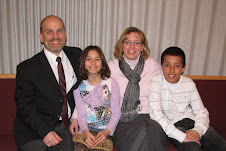So we've just come through carnival weekend only to find another day of festivities going on in the market beside us. We were told that today the party is for the Andean goddess pachamama. The 2 indigenous groups here in Bolivia, the Aymaran and the Quechuan have some very distinct spiritual rituals which include monthly sacrifices which are burnt the first Friday of every month. It took us a few months to figure out what was going on as we were noticing that every month out on the street in front of our market there were these craft like items to buy as well as small bags of carbon and grills. After asking some of our Bolivian Christian friends they explained the purpose and to whom it was for. Tonight I decided to hit Google and find out more. I've included the info from the Internet to help you understand some of the beliefs and practices here in Bolivia. Brian and I both found it interesting that tonight's party for pachamama falls on the first day of lent. Perhaps this could be because many of the Catholic beliefs here are a mix of Catholicism and indigenous spirituality. Please pray for God's presence to reveal the truth here in Bolivia.
Norma
Pachamama
From Wikipedia, the free encyclopedia
Jump to: navigation, search
For the film distributor, see Pachamama Cine.
Pachamama is a goddess revered by the indigenous people of the Andes. Pachamama is usually translated as "Mother Earth" but a more literal translation would be "Mother world" (in Aymara and Quechua mama = mother / pacha = world or land; and later spread fairly modern as the cosmos or the universe).[1] Pachamama and Inti are the most benevolent deities and are worshiped in parts of the Andean mountain ranges, also known as Tawantinsuyu (stretching from present day Ecuador to Chile and Argentina).
In Inca mythology, Mama Pacha or Pachamama is a fertility goddess who presides over planting and harvesting. She causes earthquakes. Her husband was either Pacha Camac or Inti, depending on the source. Llamas are sacrificed to her. After conquest by Catholic Spain her image was masked by the Virgin Mary, behind whom she is invoked and worshiped in the Indian ritual, in some parts of Argentina, Chile, Bolivia and Peru (Merlino y Rabey 1992).[2]
Since Pachamama is a "good mother", people usually toast to her honor before every meeting or festivity, in some regions by spilling a small amount of chicha on the floor, before drinking the rest. This toast is called "challa" and it's made almost everyday. Pachamama has a special worship day called "Martes de challa" (Challa's Tuesday) where people bury food, throw candies, burn incense. In some cases, celebrants assist traditional priests, known as "yatiris" in Aymara, in performing ancient rites to bring good luck or the good will of the goddess, such as sacrificing guinea pigs or burning llama fetuses (although these last two are no longer very common). The festival coincides with Shrove Tuesday.
Contents[hide]
1 Ritual
2 See also
3 References
4 External links
//
[edit] Ritual
The central ritual to Pachamama is the Challa or Pago (Payment). It is carried out during all the month of August, and in many places also the first Friday of each month. Other ceremonies are carried out in special times, as upon leaving for a trip or upon passing an apacheta. According to Mario Rabey and Rodolfo Merlino, Argentine anthropologists who studied the Andean culture from the 1970s to the '90s, "the most important ritual is the challaco. Challaco is a deformation of the quechua words 'ch'allay' and 'ch'allakuy', that refer to the action to insistently sprinkle.[1] In the current language of the campesinos of the southern Central Andes, the word 'challar' is used like a synonym of 'to feed and to give drink to the land'. The challaco, just as is practiced in the studied area,[3] covers a complex series of ritual steps that begin in the family dwellings the night of the eve, during which cooks a special food, the tijtincha, and that culminate in an eye of water or the beginning of a ditch where is carried out the main ritual to the Mother Earth, with a series of tributes that include food, beverage, leaves of Coca and cigars."[4]
The religion centered in the Pachamama is practiced currently in parallel form to the Christianity, to the point that many families are simultaneously Christian and pachamamistas.[3] Pachamama is sometimes syncretized the Virgin of Candelaria.[5]
Wednesday, February 17, 2010
Subscribe to:
Post Comments (Atom)



No comments:
Post a Comment